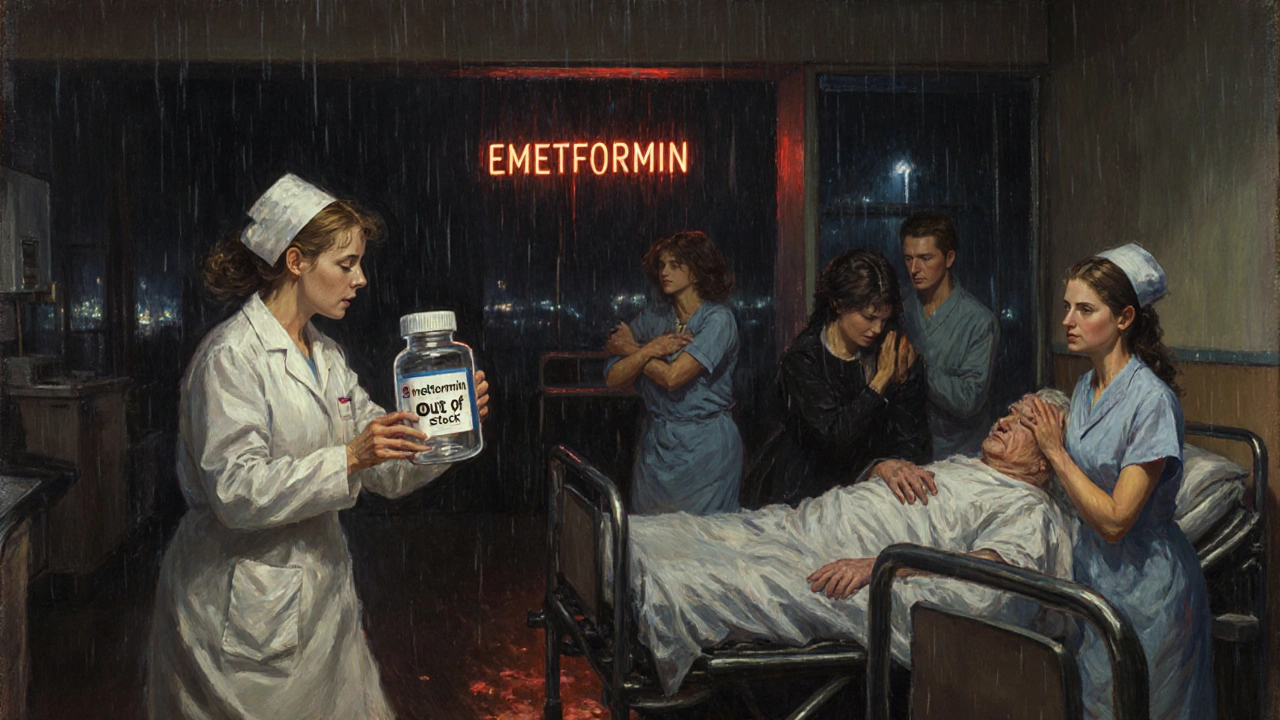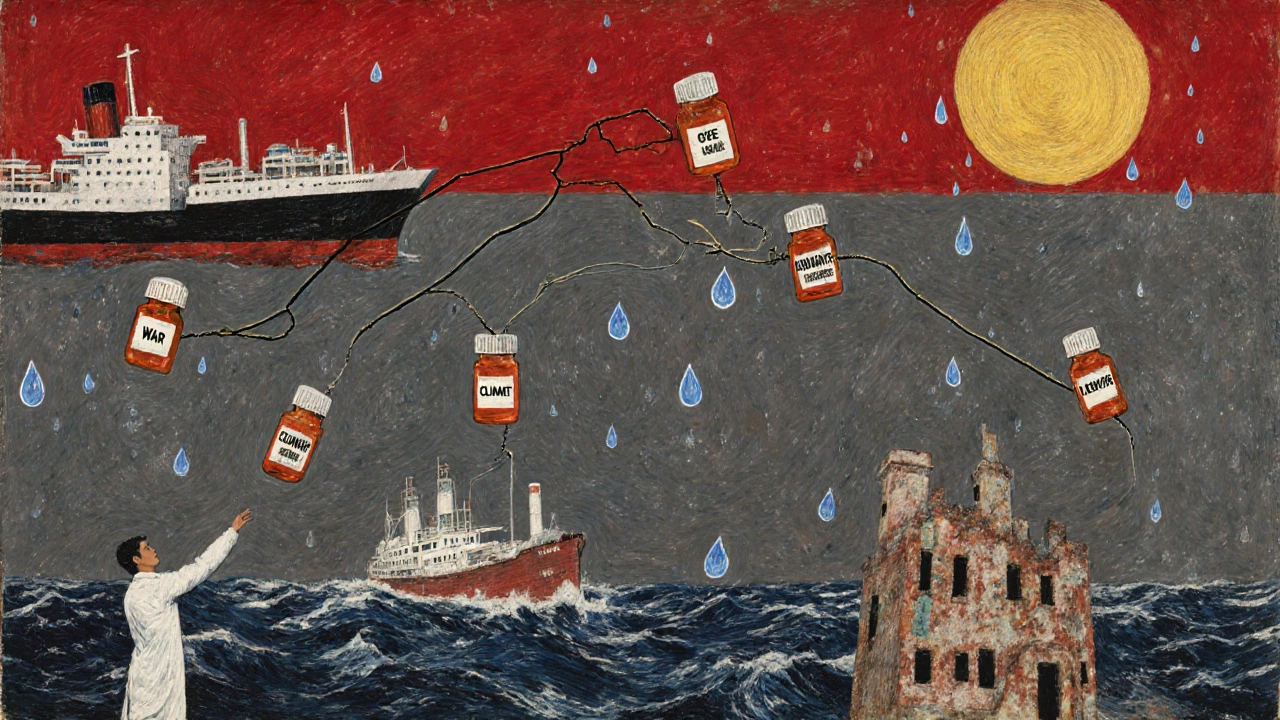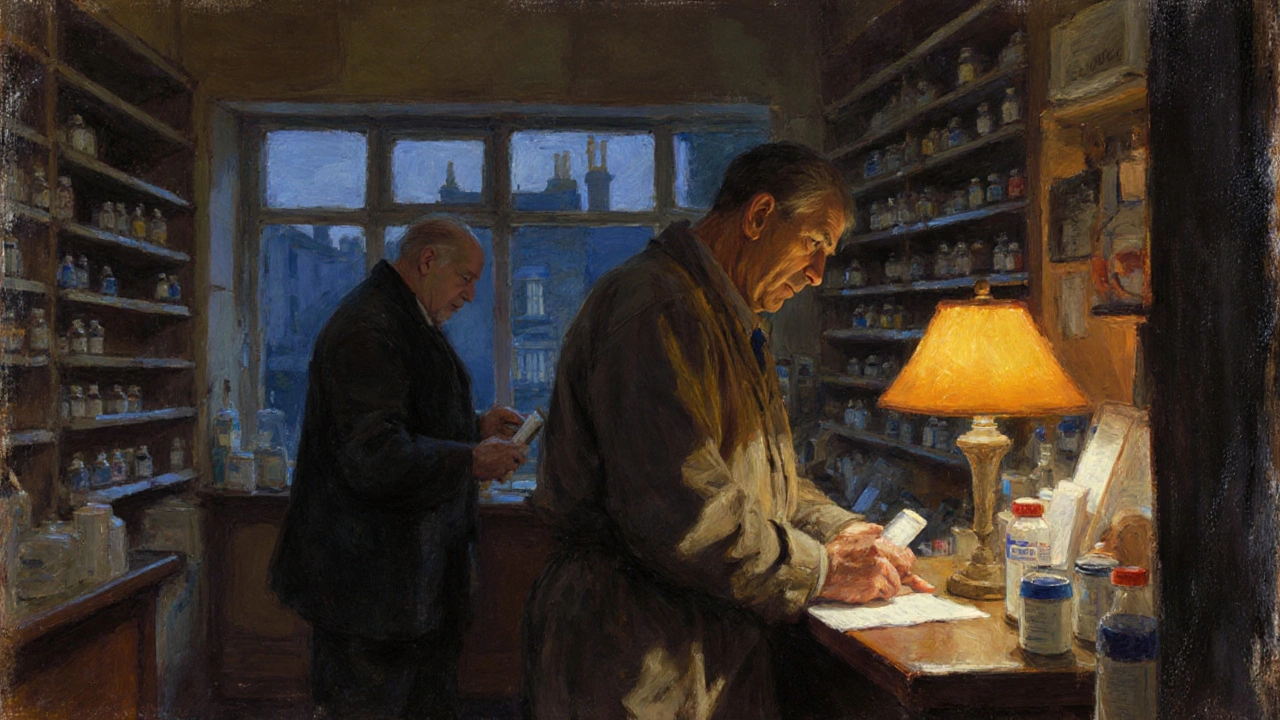When medicine disappears from the shelf
It’s not just about empty shelves at the pharmacy. In 2022, over 40% of UK community pharmacies reported running out of essential antibiotics, insulin, or blood pressure medications at least once a month. Patients waited days for prescriptions to be filled. Some skipped doses. Others drove miles to find a stock. This wasn’t bad luck-it was the visible edge of a deeper economic storm: pricing pressure and shortages in healthcare.
These aren’t new ideas. Economists have studied supply and demand imbalances since the 1800s. But what happened after 2020 changed everything. The pandemic didn’t just make people sick-it broke the system that delivers care. Global supply chains snapped. Factories shut. Truckers disappeared. And suddenly, the things we rely on-pills, syringes, ventilators, even simple IV bags-became scarce. Prices didn’t just rise. They spiked. In the UK, the cost of generic insulin jumped 22% between 2020 and 2022. In the US, the price of a single vial of epinephrine rose by 300% over five years. These weren’t isolated cases. They were symptoms of a system under strain.
Why shortages hit healthcare harder than other industries
Not all shortages are the same. A missing smartphone? You can wait. A missing ventilator? Someone dies.
Healthcare has three unique traits that make it vulnerable:
- Low price elasticity: People don’t choose whether to take insulin based on cost. They need it. That means demand doesn’t drop when prices rise-it just pushes more people into financial ruin.
- Complex supply chains: A single insulin vial can involve 12 suppliers across 6 countries. One factory in India or Germany halts production, and the whole chain stalls.
- Regulatory bottlenecks: The FDA and MHRA require months of approval for even minor changes in manufacturing. If a supplier switches a raw material, the entire batch can be delayed for over a year.
The result? When demand surges-like during flu season or a new outbreak-supply can’t keep up. And when supply drops-because of a port strike, a power outage, or a war in Ukraine-there’s no quick fix.
According to the Office for Budget Responsibility, healthcare input costs rose 18% faster than overall inflation between 2021 and 2023. That’s not just about drugs. It’s also about gloves, masks, lab reagents, and even the electricity needed to run MRI machines. These costs don’t disappear. They get passed on-to hospitals, to insurers, and ultimately, to patients.
How pricing pressure turns into real-world pain
Imagine you’re a GP in Bristol. Your patient, a 68-year-old with type 2 diabetes, needs metformin. It’s been off stock for three weeks. The alternative? A newer, branded version that costs £87 per month instead of £4.50. Your patient works part-time. They can’t afford it. You write a letter to the NHS to request an exception. They approve it-but only after 11 days.
This isn’t fiction. It happened. In 2022, the NHS reported over 1.2 million instances of drug shortages. The most common? Antibiotics, insulin, and heart medications. The San Francisco Federal Reserve found that supply chain shocks raised goods inflation by up to 1.5 percentage points. In healthcare, the impact was worse-because prices can’t be ignored.
When prices rise and supplies shrink, three things happen:
- Patients delay care: A 2023 University of Michigan survey found 54% of UK adults skipped or delayed medical treatment due to cost or availability.
- Hospitals ration: Emergency departments started limiting non-urgent procedures. Elective surgeries were postponed. Cancer screenings dropped by 19% in 2022 compared to 2019.
- Providers pay more: Hospitals paid 27% more for pharmaceuticals in 2022 than in 2019, according to NHS Digital. Some trusts spent over £2 million extra just to secure basic drugs.
And here’s the cruel twist: price controls made it worse. The UK government capped energy prices to protect households. But energy is needed to produce and transport medicines. When suppliers couldn’t cover costs, they stopped making certain drugs. Between August and December 2021, 27 UK pharmaceutical distributors went bankrupt. Their products vanished.

Who’s really behind the shortages?
It’s easy to blame “the pandemic.” But the real story is more structural.
Before 2020, global pharma relied on a few key suppliers-mostly in China and India-for active ingredients. It was cheap. Efficient. But fragile. When China locked down in early 2020, the world’s supply of paracetamol dropped by 60%. No one had backup.
At the same time, demand shifted. People stopped going to the gym. They started buying home blood pressure monitors. Demand for glucose test strips jumped 40%. But production lines didn’t adapt fast enough. And when they did, they were too slow. Regulatory delays added 8-10 months to approval times.
Labour shortages made it worse. The UK lost 12,000 healthcare support workers between 2020 and 2023. Lab technicians, warehouse staff, delivery drivers-all in short supply. The Federal Reserve found that supply shocks reduced employment by 0.15% in affected sectors. In healthcare, that meant fewer people to package, ship, and dispense medicines.
And then there’s the global layer. The war in Ukraine disrupted neon gas used in MRI machines. The Red Sea shipping crisis delayed containers of antibiotics. Climate change damaged crops used to make insulin. These weren’t random events. They were connected.
What’s working-and what’s not
Some solutions are already changing the game.
One hospital trust in Manchester started using digital supply chain tools that track inventory in real time. They cut stockouts by 31% in six months. Another NHS trust switched to dual sourcing for antibiotics-buying from both India and Poland. When one supplier failed, the other stepped in. No disruption.
Germany did something radical in 2021: they temporarily relaxed competition rules for pharmaceuticals. Normally, companies can’t share production capacity. But during the shortage, they could. Result? Pharmaceutical shortages fell by 19% in six weeks.
But not all fixes work. Price controls-like capping what pharmacies can charge for a drug-sound fair. But they backfire. If a drug costs £5 to make and you cap the price at £3, manufacturers stop making it. The shortage gets worse. The Foundation for Economic Education showed this pattern clearly: when prices are held too low, hoarding and panic buying follow.
Companies that diversified suppliers saw 40% fewer disruption days. Those that invested in local production saw faster recovery. But these changes cost money. Small pharmacies couldn’t afford them. Only big chains and hospitals could.

The future: More volatility, not less
The good news? The worst of the supply chain chaos is over. The Global Supply Chain Pressure Index (GSCPI), which tracked disruptions worldwide, returned to pre-pandemic levels by early 2023.
The bad news? It’s not coming back to normal.
Geopolitical tension, climate disruptions, and reshoring efforts mean supply chains are now more expensive and slower. Goldman Sachs predicts nearshoring will raise production costs by 8-12% long-term. The IMF says supply chain pressures will stay 15-20% above pre-pandemic levels through 2025.
Healthcare won’t escape this. In fact, it’s likely to feel it more. Why? Because healthcare is the one sector where demand never drops. People will always need insulin. Always need antibiotics. Always need cancer drugs. And if supply can’t keep up, prices will rise. Shortages will return. And patients will pay the price.
What’s next? Companies are building digital twins of their supply chains-virtual models that simulate disruptions before they happen. Gartner predicts 60% of global healthcare firms will use them by 2025. That’s progress. But it won’t fix the core problem: a system built for efficiency, not resilience.
What this means for you
If you’re a patient: keep a 30-day supply of essential medications on hand. Talk to your pharmacist about alternatives. Ask if a generic version exists.
If you’re a provider: push for dual sourcing. Use digital inventory tools. Build relationships with multiple suppliers-not just the cheapest one.
If you’re a policymaker: stop capping prices without fixing supply. Invest in local manufacturing of critical drugs. Simplify regulatory approvals for emergency swaps. And don’t forget the people who keep the system running-train more lab techs, warehouse workers, and delivery staff.
Healthcare isn’t just about doctors and hospitals. It’s about the invisible network of factories, trucks, and workers that deliver care. When that network breaks, the cost isn’t just financial. It’s human.
Why do drug shortages keep happening even after the pandemic?
Drug shortages persist because the system was built for low cost, not resilience. Many medicines rely on single suppliers in one country. When a factory closes, a port shuts down, or a war disrupts shipping, there’s no backup. Regulatory delays also slow down new suppliers from entering the market. Even though global supply chains have improved, the underlying fragility remains.
Can price controls solve drug shortages?
No. Price controls make shortages worse. If a drug costs £5 to produce and the government caps the price at £3, manufacturers lose money. They stop making it. That’s exactly what happened in the UK in 2021 when energy price caps made it unprofitable for some suppliers to produce medicines. The result? More shortages, not fewer.
Are generic drugs more likely to be in short supply?
Yes. Generic drugs are made by smaller companies with thinner profit margins. They often rely on just one or two suppliers for raw materials. When those suppliers face disruptions, generics are the first to disappear. In 2022, over 60% of UK drug shortages involved generics. Brand-name drugs, made by larger companies with global backups, were less affected.
How do supply chain issues affect NHS budgets?
NHS trusts spent an extra £1.4 billion on pharmaceuticals in 2022 compared to 2019, mostly due to higher prices and emergency purchases. This forced cuts elsewhere-delayed surgeries, reduced staffing, and frozen equipment upgrades. The NHS now spends 22% of its budget on medicines, up from 18% in 2019.
What can patients do if their medication is out of stock?
First, ask your pharmacist for alternatives-sometimes a different brand or formulation works. Second, check the NHS website for official shortage notices. Third, contact your GP to see if a temporary substitute is available. Don’t skip doses without medical advice. If you’re struggling to afford a replacement, ask about patient assistance programs or generic equivalents.
What’s next for healthcare economics?
The next five years will test whether we’ve learned anything. Will we keep treating healthcare like a commodity to be optimized for cost? Or will we start building systems that can survive shocks-because people’s lives depend on it?
One thing is clear: the days of cheap, effortless access to medicine are over. The question now is whether we’re ready to pay the price-not just in money, but in foresight, investment, and policy.





